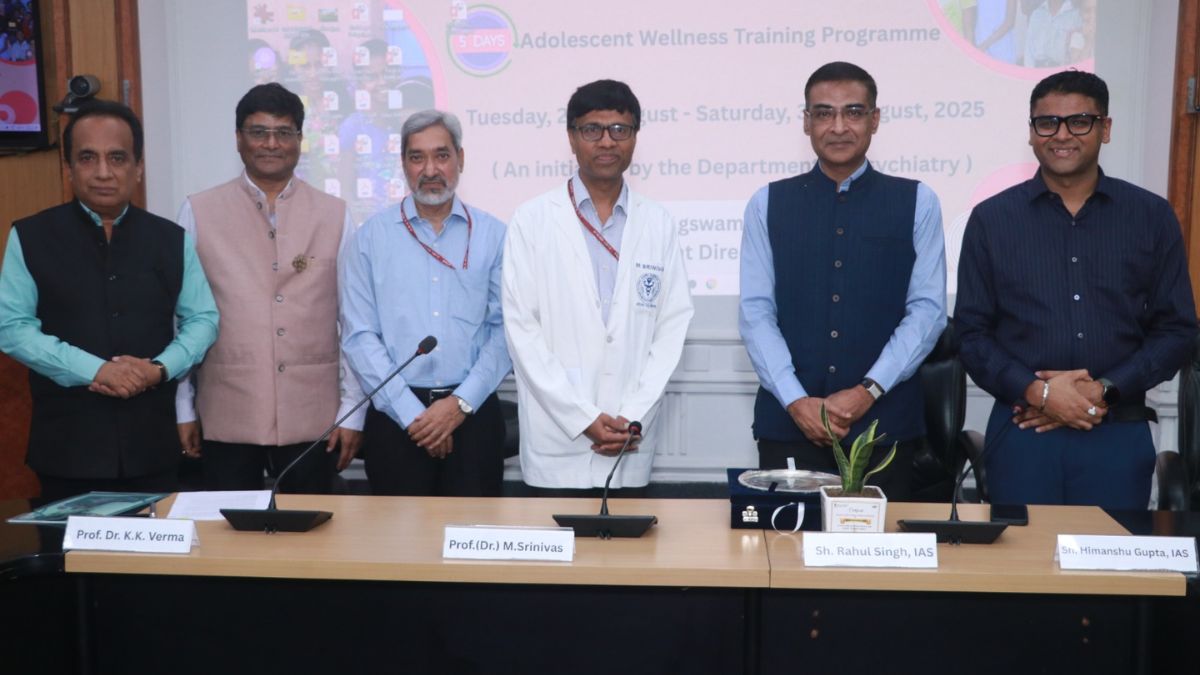CBSE Collaborates with AIIMS Delhi to Launch Project MATE for Adolescent Wellness
CBSE, in collaboration with AIIMS Delhi, has launched Project MATE to train school counsellors in mental health support. Around 50 counsellors from CBSE-affiliated schools across the Delhi-NCR region will attend the inaugural session which is scheduled to continue till August 30.
CBSE and AIIMS Delhi have launched Project MATE to train school counsellors in mental health support. Around 50 counsellors from CBSE-affiliated schools across the Delhi-NCR region will attend the inaugural session, scheduled to continue till August 30.
The Central Board of Secondary Education (CBSE) and the All India Institute of Medical Sciences (AIIMS), New Delhi, will together launch the Project MATE (Mind Activation Through Education). MATE is a first-of-its-kind adolescent wellness training programme for CBSE school counsellors and wellness teachers. As a part of the collaboration, nearly 50 counsellors from CBSE-affiliated schools in the Delhi-NCR region will participate in the inaugural session. The session will continue till August 30, 2025.
CBSE Chairperson Rahul Singh, while addressing, said children today face increasing issues of loneliness, stress, and emotional disconnection. “Project MATE provides a framework to address these needs by equipping school counsellors and educators with the right tools to intervene meaningfully,” he cited.
Going further, AIIMS Director Prof. M. Srinivas called the programme a “transformative initiative” that bridges education and health. He highlighted the importance of strength-building, collective responsibility, and quick support for adolescent well-being.
CBSE Secretary Himanshu Gupta mentioned that the Project MATE is an important step toward strengthening the school counselling system across the country. He added that the results of this program will be carefully checked before expanding it further.
Read more:
According to AIIMS Delhi NIRF report 2024, the median packages recorded during AIIMS Delhi placements 2024 as compared with 2023 and 2022 are presented below:
| Course | Median Package (2022) | Median Package (2023) | Median Package (2024) |
|---|---|---|---|
| UG 3-year | INR 11 LPA | INR 12 LPA | INR 12.50 LPA |
| UG 4-year | INR 15 LPA | INR 15.50 LPA | INR 16 LPA |
| PG 1-year | INR 22 LPA | INR 20 LPA | |
| PG 2-year | INR 15 LPA | INR 16 LPA | INR 17 LPA |
| PG 3-year | INR 30 LPA | INR 32 LPA | INR 34 LPA |
| PG 6-year | INR 30 LPA | INR 32 LPA | INR 34 LPA |
AIIMS Delhi average package data is not released. Nevertheless, as per the NIRF report 2025, the course-wise median package offered during AIIMS Delhi placements 2024 is presented below:
Course |
Median Package (2024) |
|---|---|
UG 3-year (BSc) |
INR 12.50 LPA |
UG 4-year |
INR 16 LPA |
PG 1-year (PG Diploma) |
INR 20 LPA |
PG 2-year (MSc) |
INR 17 LPA |
INR 34 LPA |
|
PG 6-year |
INR 34 LPA |
Follow Shiksha.com for latest education news in detail on Exam Results, Dates, Admit Cards, & Schedules, Colleges & Universities news related to Admissions & Courses, Board exams, Scholarships, Careers, Education Events, New education policies & Regulations.
To get in touch with Shiksha news team, please write to us at news@shiksha.com

Comments
Latest News
Next Story

AIIMS Delhi has not released its placement rate for the year 2024. Students can refer to the table below which states the total students and the number of students placed during AIIMS Delhi placements:
NOTE: The data is taken from NIRF Report 2025